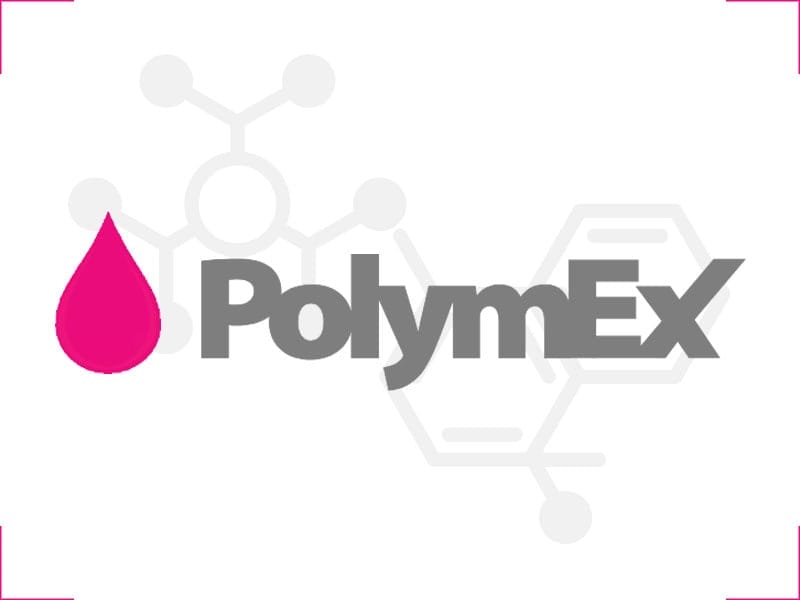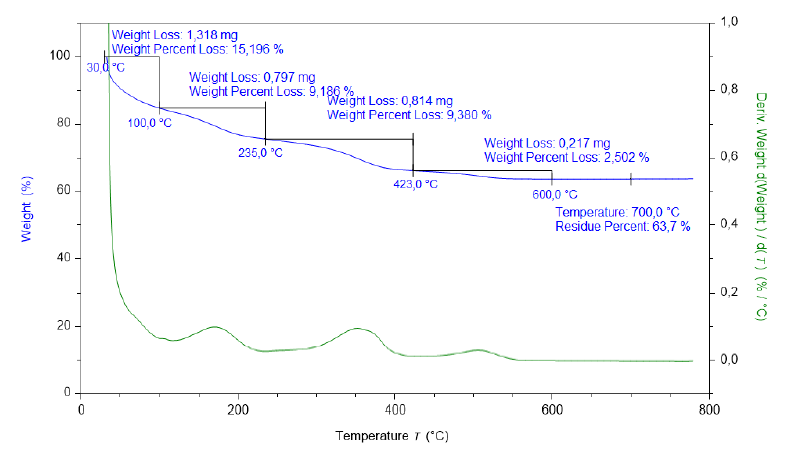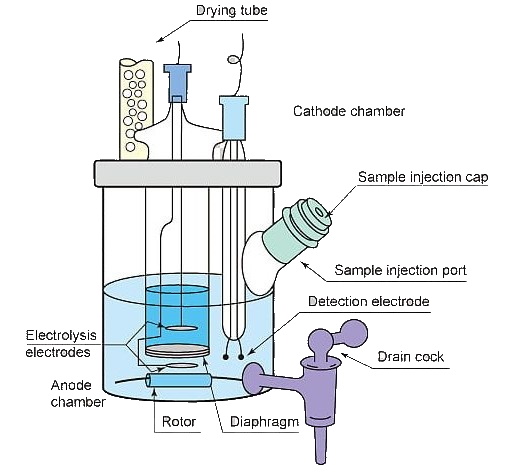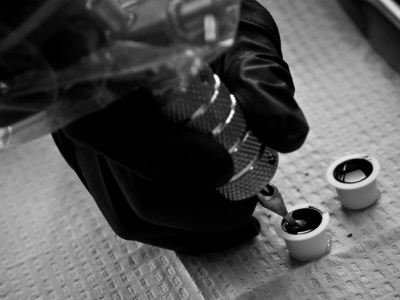• Water content: Karl Fisher
In parallel, a check of the water content was carried out according to the Karl Fischer method.
The principle is to react the water present in the sample with iodine and sulfur dioxide in the presence of methanol and a base.
As long as there is water iodine reacts with it, and the amount of iodine formed is proportional to the electrolysis current.
Knowing that a water molecule is equivalent to a precise quantity of electricity formed, we are therefore able to deduce the quantity of water present in the sample analyzed.

 EN
EN
 FR
FR





